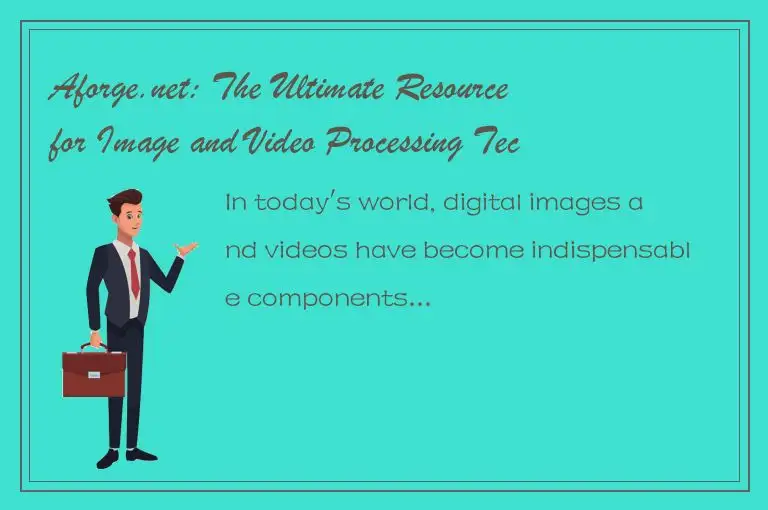In today's world, digital images and videos have become indispensable components of various applications, ranging from social media to scientific research. The manipulation and analysis of these media files require advanced image and video processing technologies that can extract relevant information and insights. This is where Aforge.net comes into play. Aforge.net is a comprehensive open-source framework that provides a wide range of tools and algorithms for image and video processing. This article explores the features and benefits of Aforge.net and how it can be used in different applications.

What is Aforge.net?
Aforge.net is a free, open-source framework for developers who work on image and video processing applications. It was created by Andrew Kirillov in 2005 and has since been maintained by a community of developers. The framework is written in C# language and can be used in Microsoft .NET Framework, Mono, and .NET Core. Aforge.net is designed to be flexible, efficient, and extensible, allowing developers to easily integrate it into their applications.
Features and Benefits of Aforge.net
Aforge.net provides a wide range of features and benefits that make it an indispensable tool for image and video processing applications. Some of the key features of the framework include:
1. Image Processing Tools: Aforge.net provides a variety of tools for image processing, including image filtering, thresholding, edge detection, and morphology, to name a few. These tools can be used to enhance image quality, segment objects, and extract information from images.
2. Video Processing Tools: Aforge.net also provides a variety of tools for video processing, including motion detection, object tracking, and video compression. These tools can be used to analyze video streams and extract relevant information.
3. Machine Learning Algorithms: Aforge.net includes several machine learning algorithms, such as neural networks, support vector machines, and decision trees. These algorithms can be used for image classification, object recognition, and other tasks.
4. Compatible with Multiple Platforms: Aforge.net can be used on multiple platforms, including Microsoft .NET Framework, Mono, and .NET Core. This makes it a versatile tool that can be used in different environments.
5. Easy to Use and Customize: Aforge.net is easy to use and customize, with a well-documented API and examples to get developers started quickly. It is also extensible, allowing developers to add their own algorithms and tools to the framework.
Applications of Aforge.net
Aforge.net can be used in a wide range of applications that require image and video processing technologies. Some of the common applications of Aforge.net include:
1. Automated Surveillance: Aforge.net can be used in automated surveillance applications for motion detection, object tracking, and event recognition. This can be used in security systems, traffic monitoring, and other applications.
2. Medical Imaging: Aforge.net can be used in medical imaging applications for image processing, segmentation, and analysis. This can be used in diagnostics, research, and treatment planning.
3. Robotics: Aforge.net can be used in robotics applications for image and video processing, object recognition, and control. This can be used in autonomous vehicles, drones, and other applications.
4. Gaming: Aforge.net can be used in gaming applications for image and video processing, motion detection, and gesture recognition. This can be used in interactive games, augmented reality, and virtual reality.
Conclusion
Aforge.net is a comprehensive open-source framework that provides a wide range of tools and algorithms for image and video processing. Its features and benefits make it an indispensable tool for developers who work on image and video processing applications. Aforge.net can be used in various applications, including automated surveillance, medical imaging, robotics, and gaming. With its ease of use, extensibility, and compatibility with multiple platforms, Aforge.net is undoubtedly the ultimate resource for image and video processing technologies.




 QQ客服专员
QQ客服专员 电话客服专员
电话客服专员